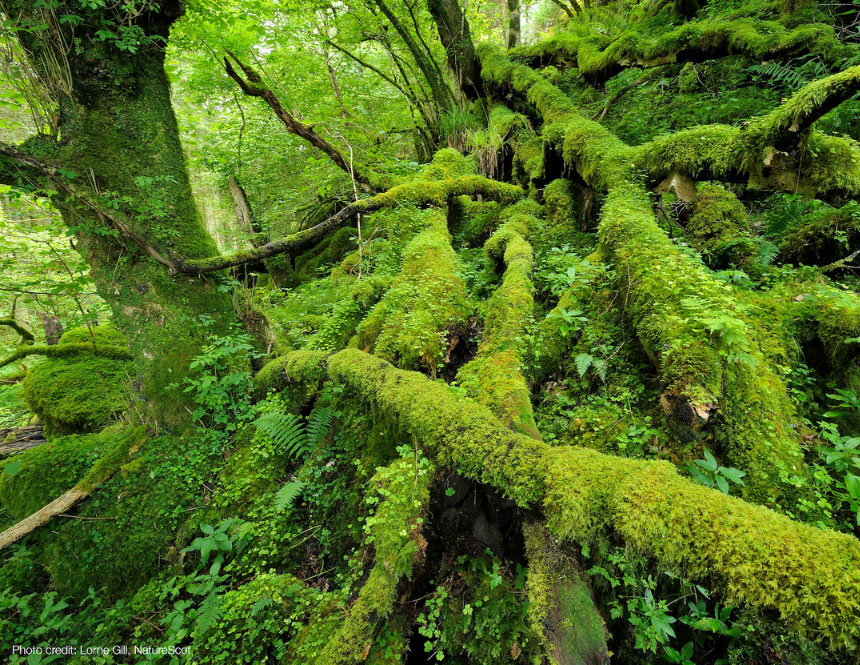The power of forests: 5 impressive forests protecting our planet
Forests play a key role in tackling climate change and protecting ecosystems. Annie shares some of the world’s most impressive forests.
Well-maintained forests are a vital part of our efforts to tackle climate change and a crucial part of our ecosystems globally. Raleigh young person Annie shines a spotlight on a few of the most impressive forests world-wide and the why it is important to protect them.
Forests act as carbon sinks when they are looked after, absorbing a net 7.6 billion metric tonnes of CO2 per year, but they also release carbon when degraded and poorly managed. Whilst it’s important to plant new trees and grow forests, it’s also arguably more important to manage the ones we have.
That’s not the only use of healthy forests though, they often act as places of shelter, food, medicine and work across many different communities in every continent – 1.6 billion people depend on forests for their livelihoods. The clearing and degrading of these forests can have disastrous consequences for the well-being of humans and animals everywhere
Scottish Rainforest – Western Highlands of Scotland
Scotland’s rainforest, also known as Atlantic woodland or Celtic rainforest, comprises the semi-natural woodlands of Scotland’s west coast. Scotland is the last stronghold of this globally important and rare habitat that once spread along the Atlantic coastline of Europe. While it is an important place not just for biodiversity and for its vast carbon locking potential, it is also important for the people that live and work on the west coast of Scotland who rely on it for jobs, tourism and education. But only 30,000 hectares of Scottish rainforest remain, and this is threatened by overgrazing, invasive plant species and tree disease.
Baobab Forests – The African continent
Despite different species of Baobab existing in different parts of the world, seven different species of Baobab are widespread across Africa, and perhaps the most famous is the Adansonia digitata. These magnificent trees can live up to 2,500 years.
The communities that live around Baobab forests use the trees for shelter, food, medicine, cosmetics, coffee, oils, water, dyes and more. Baobab fruits and other byproducts are often sold locally and in international markets, which allows local economies to flourish.
However recently Baobab trees have been decreasing in number, likely due to climate change, and its effects on weather patterns and the susceptibility of these trees to diseases.
Amazon Rainforest – South America
The Amazon Rainforest is famous as the world’s largest tropical rainforest and for having the Amazon River run through it. The Amazon preserves masses of wildlife and the diversity of species there is one of the greatest in the world, with over 2.54 million different species of plants, mammals, insects, fish and birds. Locally 400-500 indigenous tribes rely on the Amazon for food, water, shelter and medicine, whilst internationally we rely on it to stabilise climates, for ingredients, materials and more.
However, the Amazon is facing massive deforestation at the hands of corporations, which have lead to fires throughout regions of the rainforest. This is a worry for everyone globally. The Amazon was one of the biggest carbon sinks in the world prior to deforestation, but this rate of absorption has decreased with deforestation in the region.
Bamboo forests – China
Bamboo is technically a type of grass, and it is one of the fastest-growing in the world; some bamboo can grow 36 inches in 24 hours. It’s been suited for afforestation trials as they are effective carbon sinks and if their growth rate is faster than alternative trees, meaing there are not too many concerns about logging the plant yet.
Bamboo is also really versatile! It can be used for building and as a food source. It is also a plastic-free alternative to many household items like polyester clothing, toothbrushes, straws, sponges and even deodorant packaging! The bamboo economy is also huge, standing at £5.5 billion in 2004 and has been beneficial for local Chinese economies. However, the vast demand for bamboo means that space needs to be made for more bamboo monocultures, which can disrupt eco-systems.
Cork Forests – Montado, Portugal
The Cork Forests of Montado are unique as cork trees are one of the only species of tree that can have their bark stripped without them dying, this means they can live for over 200 years with their bark harvested every nine years for the cork we know and love. This means that cork is one of the most sustainable types of wood, as harvesting it doesn’t harm the trees and the forests can be maintained for a very long time.
Cork trees aren’t only just good for making sustainable goods, the Montado in particular acts as a really important part of Portugal’s economy and efforts to tackle carbon, the cork forests sucking in 14 million tonnes of CO2 every year. The forests also provide for local communities, helping them with employment, sustainable income, shelter, biodiversity and food.
Need more information about Expedition?
Consultation call
Whether you have a specific question or want to discuss which Expedition is right for you, schedule a call with a member of the team at a time convenient to you.
Join an info event
On our monthly online info events, we’ll tell you all about Expedition. Have your questions answered, meet other volunteers and find out what Expedition is really like from an alumni.
Download a guide
Find out all about Raleigh International and Expedition in our helpful information guide.










